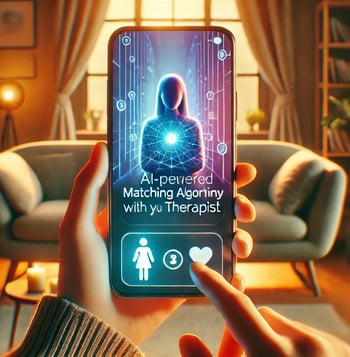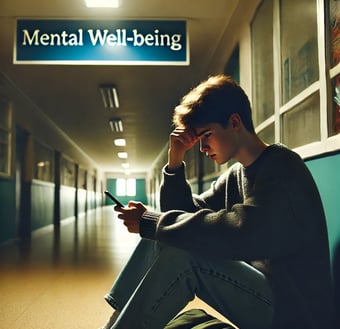Mental Health & Behavioral Care in 2025: Top Trends Shaping America’s Well-Being
Discover the 2025 trends revolutionizing mental health care in the USA—from virtual therapy breakthroughs to tackling youth crises and workplace burnout. Learn actionable solutions today.
3/10/20253 min read
Introduction
In 2025, mental health is no longer a silent struggle. With 1 in 4 Americans facing mental health challenges, the U.S. is witnessing a transformative shift in how we approach behavioral care. From AI-powered therapy apps to employer-driven wellness programs, innovation is breaking down barriers to access. In this article, we explore the top 5 trends redefining mental health care in 2025—and how you can leverage these changes for better well-being.
1. The Rise of Virtual Therapy: Accessible Care at Your Fingertips
The pandemic accelerated telehealth adoption, but 2025 is the year virtual therapy goes mainstream. Platforms like BetterHelp and Talkspace now offer AI-enhanced matching algorithms to pair users with licensed therapists in under 24 hours. Key drivers:
Accessibility: 64% of rural Americans now use telehealth for behavioral care, bridging the urban-rural divide.
Cost-Effectiveness: Virtual sessions cost 30-50% less than in-person visits, with many employers covering fees.
Stigma Reduction: Anonymity encourages marginalized groups (e.g., LGBTQ+ youth) to seek help.
Pro Tip: Look for platforms with HIPAA-compliant encryption to protect your privacy.
2. Youth Mental Health Crisis: Why Gen Z is Struggling—and How to Help
The CDC reports that 42% of high school students experienced persistent sadness in 2024, a 12% jump from 2020. Contributing factors:
Social Media Overload: Algorithms promoting unrealistic beauty standards and cyberbullying.
Academic Pressure: 68% of teens cite college admissions stress as a top anxiety trigger.
Pandemic Aftermath: Lingering isolation and disrupted social development.
Solutions Gaining Traction:
School-based mental health clinics with on-site counselors.
Apps like Calm and Headspace offering free subscriptions to students.
Parental coaching programs to recognize early warning signs (e.g., withdrawal, irritability).
3. Workplace Burnout: Employers Step Up for Employee Well-Being
Burnout costs U.S. employers $190 billion annually in productivity losses. In response, companies are prioritizing mental health like never before:
Expanded EAPs: 72% of Fortune 500 firms now offer free therapy sessions and stress-management workshops.
Flexible Work Models: Hybrid schedules and "mental health days" reduce chronic stress.
AI-Driven Monitoring: Tools like Limeade analyze employee surveys to flag burnout risks early.
Did You Know? Google and Microsoft now train managers in "mental health first aid" to support struggling teams.
4. Predictive Analytics: Stopping Mental Health Crises Before They Start
AI isn’t just for chatbots—it’s saving lives. Hospitals and insurers use predictive models to:
Analyze social media, wearable data, and EHRs to identify suicide risk factors.
Flag at-risk patients for early intervention, reducing ER visits by 22% (per McKinsey).
Personalize treatment plans using genetic and lifestyle data.
Ethical Debate: While promising, critics warn about data privacy and algorithmic bias.
5. Breaking the Stigma: How Celebrities and Policy Are Changing the Game
From Simone Biles to Prince Harry, celebrities are normalizing therapy and self-care. Policy shifts are also making waves:
The Mental Health Parity Act (2024): Requires insurers to cover behavioral care equally to physical health.
Social Media Reforms: TikTok and Instagram now blur triggering content and provide crisis hotline prompts.
Takeaway: Share your story! Open conversations reduce stigma—53% of Americans now view therapy positively, up from 31% in 2020.
Conclusion: Your Mental Health Matters in 2025
The future of behavioral care is proactive, personalized, and accessible. Whether you’re exploring virtual therapy, advocating for workplace wellness, or supporting a loved one, staying informed is the first step to healing.
FAQ Section
Q: How do I find affordable therapy in 2025?
A: Use federally funded platforms like MentalHealth.gov or employer-sponsored EAPs. Sliding-scale clinics also offer low-cost sessions.
Q: What’s the best app for teen mental health?
A: MindShift CBT (free, evidence-based) helps teens manage anxiety with guided exercises.
Q: Can AI really replace human therapists?
A: No—AI complements care by providing 24/7 support (e.g., Woebot), but human connection remains irreplaceable.






